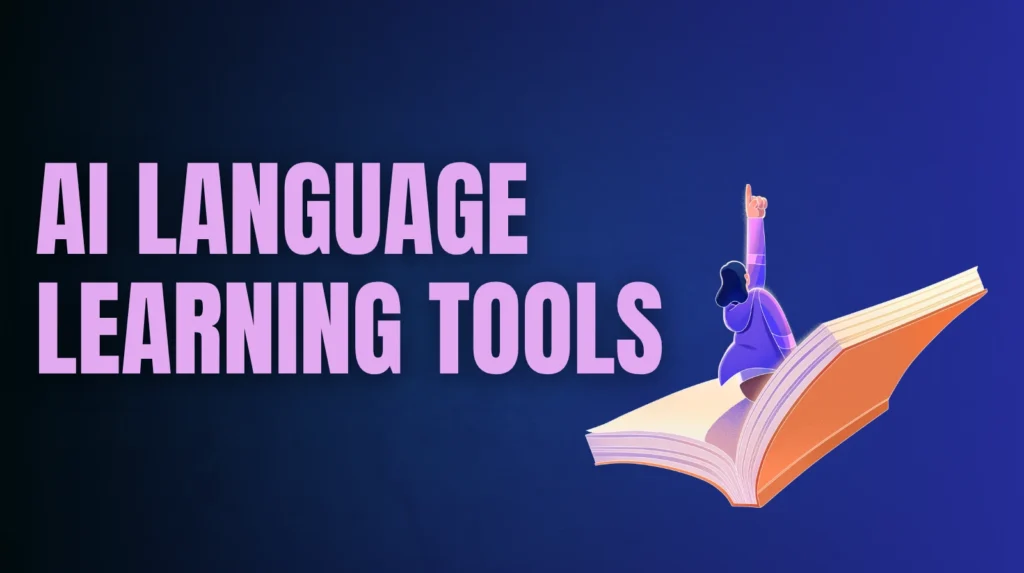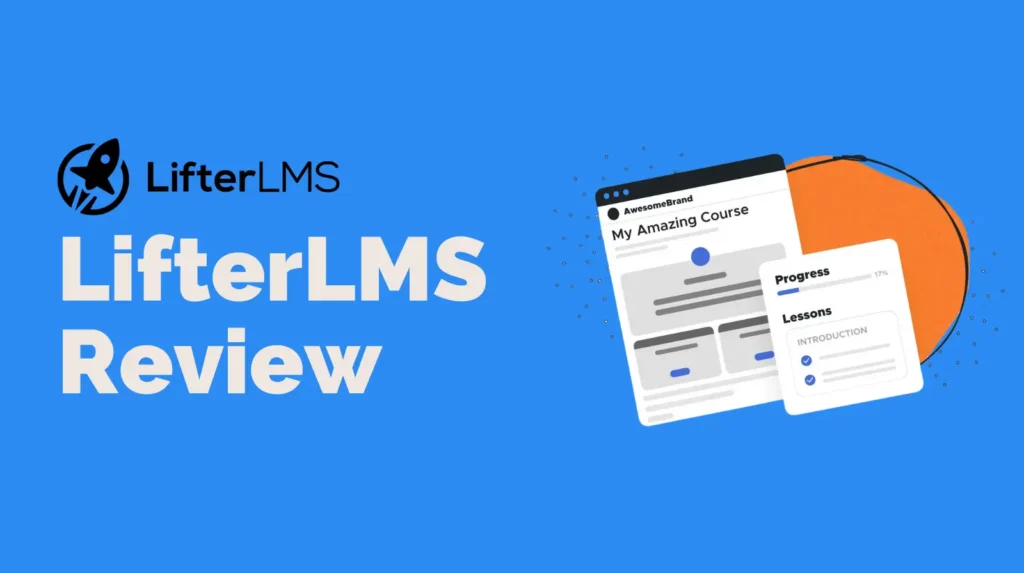Forget dusty textbooks and rigid classroom schedules. The way we learn languages has undergone a revolution, powered by Artificial Intelligence. In 2025, AI language learning tools offer personalized, interactive, and incredibly effective pathways to fluency, leveraging smart algorithms for real-time feedback, adaptive lessons, and even AI translation assistance.
Whether you’re a student aiming for top marks, a traveler preparing for a trip, a professional needing business fluency, or simply passionate about acquiring a new tongue, AI platforms provide unprecedented support. These tools adapt to your pace, correct your pronunciation instantly, and make learning engaging and accessible anytime, anywhere. This guide explores the best AI language learning apps and platforms changing the game. This shift towards AI mirrors advancements seen in education generally, similar to the impact of the best AI tools for students.
Why AI Language Learning Outpaces Traditional Methods
Traditional language learning often involves a one-size-fits-all curriculum. AI flips the script:
- Personalized Learning Paths: AI algorithms analyze your strengths and weaknesses, tailoring lesson difficulty, content focus (grammar vs. vocabulary vs. speaking), and review schedules specifically for you.
- Instant, Granular Feedback: AI tools provide immediate corrections on pronunciation, grammar, and word choice – something a human teacher can’t always do in real-time for every student.
- Adaptive Difficulty: The system adjusts based on your performance, ensuring you’re constantly challenged but not overwhelmed.
- Accessibility & Flexibility: Learn on your schedule, wherever you are, through mobile apps and web platforms. Practice speaking without fear of judgment.
- Engaging Formats: Gamification, interactive exercises, real-world content integration, and AI conversation partners make learning more motivating.
Key Benefits of Using AI Language Learning Tools
Integrating AI into your language study yields significant advantages:
- Accelerated Fluency: Personalized feedback loops and adaptive learning help you progress faster.
- Improved Pronunciation: AI speech recognition provides detailed phonetic feedback compared to native speakers.
- Enhanced Vocabulary Retention: AI-driven spaced repetition systems (SRS) optimize review schedules for long-term memory.
- Contextual Understanding: AI introduces vocabulary and grammar through realistic conversations and content, not just isolated drills.
- Increased Confidence: Practice speaking and writing in a safe, non-judgmental environment provided by AI tutors or chatbots.
- Data-Driven Progress Tracking: AI monitors your progress, identifies problem areas, and visualizes your improvement over time.
Top AI Language Learning Tools & Platforms in 2025
Here are some of the most effective AI-powered tools helping millions learn languages smarter:
Comprehensive Language Learning Apps
1. Duolingo (with Duolingo Max/AI Features)
- Best For: Beginners and casual learners seeking a fun, gamified experience.
- Key AI Features: Integrates GPT-4 for “Explain My Answer” (detailed grammar explanations) and “Roleplay” (conversational practice scenarios). Uses AI to personalize lesson paths and review schedules based on user performance. Continues strong use of gamification.
2. Babbel
- Best For: Learners seeking structured, conversation-focused lessons created by experts.
- Key AI Features: Employs AI for speech recognition to provide pronunciation feedback. Uses adaptive learning algorithms to personalize review sessions and adjust lesson paths based on learner progress and identified weak spots. Lessons focus on real-world conversation skills.
3. Memrise
- Best For: Vocabulary acquisition through spaced repetition and real-world context.
- Key AI Features: Core feature is an AI-driven spaced repetition system (SRS) optimizing vocabulary review intervals. Integrates “Learn with Locals” video clips of native speakers. Features an AI language partner (“MemBot”) for conversational practice.
4. Rosetta Stone
- Best For: Immersive learning focusing on intuition and pronunciation.
- Key AI Features: Patented TruAccent™ speech recognition engine compares learner pronunciation to native speaker data, providing detailed feedback. Uses AI to tailor the sequence of immersive lessons based on learner performance, reinforcing concepts without explicit translation.
Specialized AI Tools
5. Elsa Speak
- Best For: Dedicated English pronunciation improvement.
- Key AI Features: Advanced AI speech recognition analyzes pronunciation at the phoneme level, providing instant, color-coded feedback on accuracy, fluency, and intonation. Offers personalized lesson plans targeting specific weaknesses identified by the AI.
6. LingQ
- Best For: Intermediate/advanced learners using authentic content (reading/listening).
- Key AI Features: Imports real-world content (articles, podcasts, videos). AI tracks known vs. unknown words (‘LingQs’), provides instant translations/definitions in context, and uses SRS for vocabulary review. Learner progress dictates content difficulty suggestions.
AI Tutors & Conversation Partners
7. ChatGPT (GPT-4 and later versions)
- Best For: Flexible conversational practice, grammar explanations, and writing correction.
- Key AI Features: Simulates realistic text or voice conversations on any topic. Can explain complex grammar rules, provide synonyms/antonyms, correct written text with detailed feedback, role-play scenarios, and offer cultural context. Voice features allow for spoken practice.
8. Replika
- Best For: Casual, judgment-free conversational practice in a supportive environment.
- Key AI Features: AI companion designed for empathetic conversation. While not strictly a language tutor, it adapts to the user’s language level, remembers past conversations, and provides a low-pressure environment to practice speaking/texting daily.
AI-Enhanced Content & Translation
9. Google Translate
- Best For: Quick, versatile translation across text, voice, and images.
- Key AI Features: Leverages advanced neural machine translation (NMT) for more accurate, context-aware translations. Offers real-time voice translation (Conversation Mode) and instant camera translation (Lens). AI improves understanding of idioms and nuances.
10. YouTube (with AI Captions & Translation)
- Best For: Immersive learning through authentic video content.
- Key AI Features: AI automatically generates captions for a vast number of videos. Offers auto-translation of captions into numerous languages. Allows playback speed adjustment. Combining native speaker content with AI captions/translation creates a powerful learning tool. Many free AI tools leverage similar AI translation capabilities.
The Role of AI Translation Tools in Learning
Translation AI like Google Translate, DeepL, or features within ChatGPT are powerful aids, not replacements for learning. They help by:
- Bridging Gaps: Quickly understanding unknown words or complex sentences in authentic materials.
- Verifying Understanding: Checking if your own phrasing conveys the intended meaning.
- Deconstructing Grammar: Seeing how ideas are structured differently across languages.
Use them strategically to support comprehension and check your work, but avoid over-reliance, which can hinder true language acquisition.
Maximizing Your Learning with AI Tools
- Combine Tools: Use a core app (Duolingo/Babbel), a pronunciation coach (Elsa Speak), a conversation partner (ChatGPT), and authentic content (LingQ/YouTube).
- Be Consistent: Aim for short, daily practice sessions. AI tools make this easy.
- Speak Aloud: Use voice recognition features frequently. Don’t be afraid to make mistakes.
- Embrace Mistakes: AI provides instant, private correction – see errors as learning opportunities.
- Use Authentic Content: Supplement app lessons with real-world materials (videos, articles) via tools like LingQ or YouTube.
- Set Clear Goals: Define what you want to achieve (e.g., conversational fluency, passing an exam) and let the AI help track your progress.
The Future of AI in Language Learning
The horizon looks even more exciting:
- Hyper-Personalization: AI tutors adapting not just to your knowledge but also your learning style and emotional state.
- Immersive VR/AR: Practicing languages in simulated real-world environments with AI characters.
- Real-Time Wearable Translators: Devices offering instant translation, potentially with AI coaching features.
- More Sophisticated AI Tutors: AI capable of deeper pedagogical understanding and cultural nuance explanation.
AI is poised to become an indispensable language learning companion, making fluency more attainable for everyone.
Conclusion: Your AI Language Coach Awaits
AI language learning tools have fundamentally democratized and enhanced language acquisition. Offering unparalleled personalization, instant feedback, and flexible access, they provide a powerful alternative or supplement to traditional methods. From AI translation aids to sophisticated AI pronunciation coaches and adaptive learning platforms, the technology caters to every aspect of becoming proficient in a new language.
The time to leverage these intelligent tools is now. Identify your goals, explore the platforms that resonate with your learning style, and commit to consistent practice. With AI as your guide, mentor, and practice partner, achieving language fluency is smarter and more accessible than ever before.








